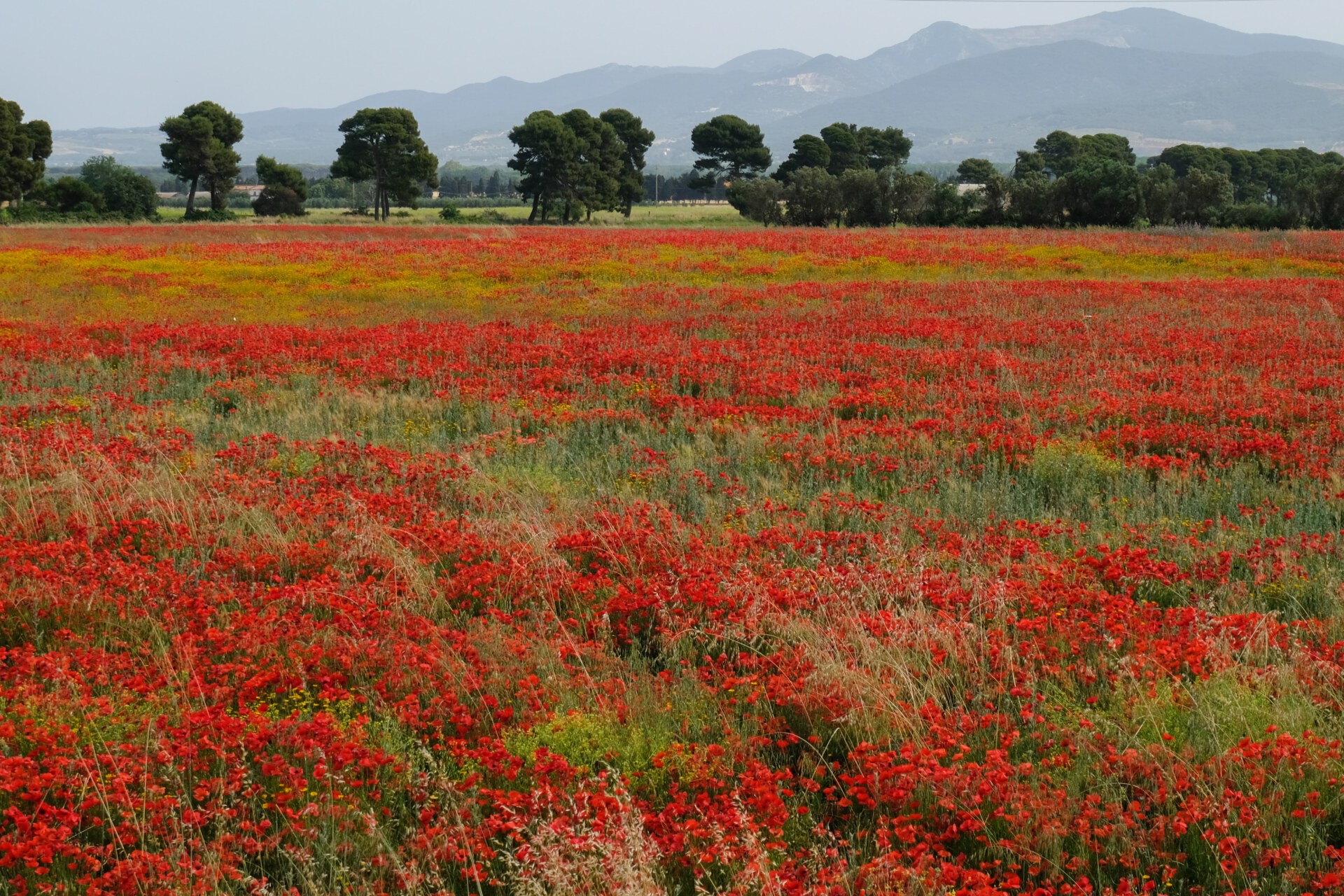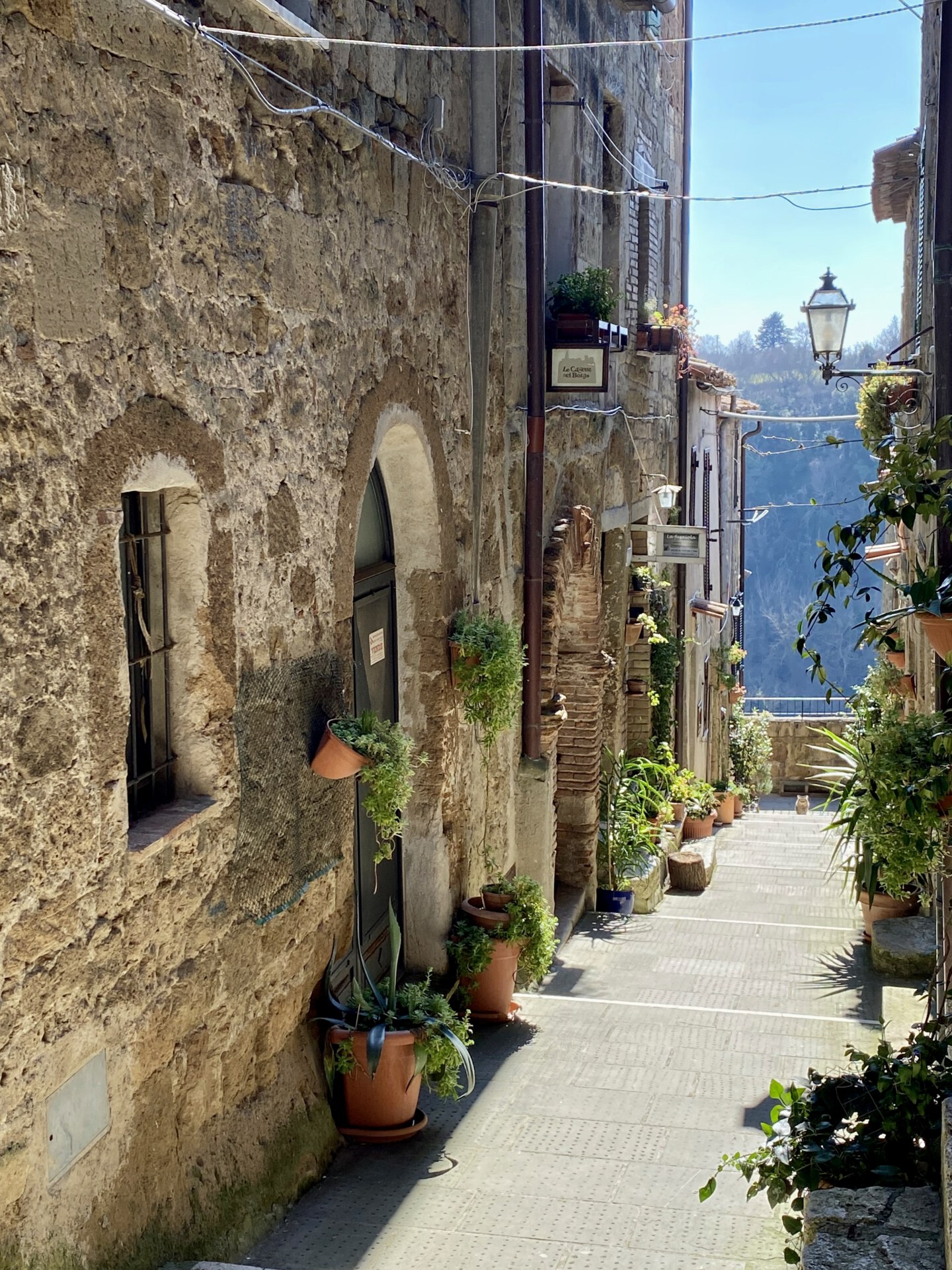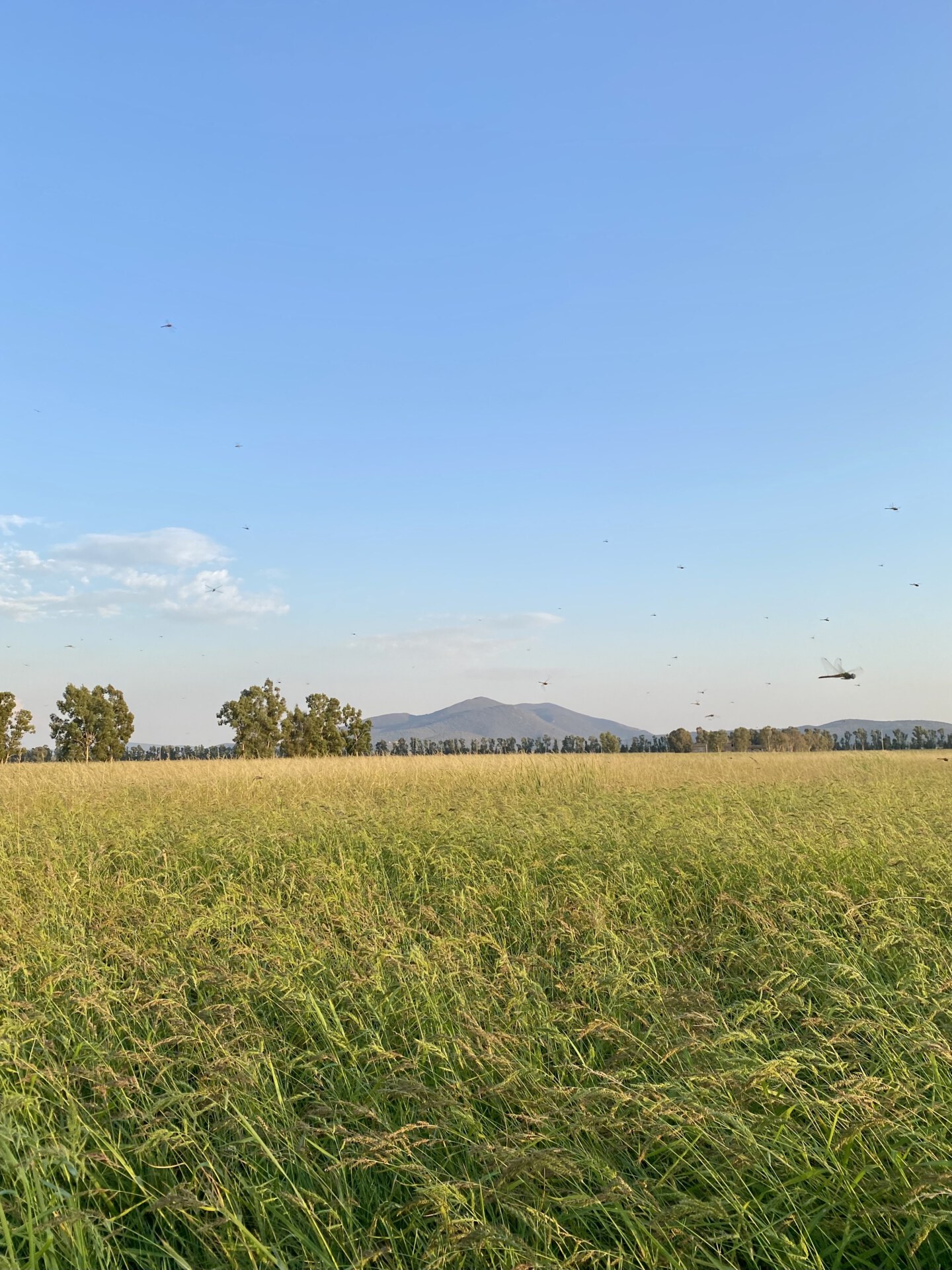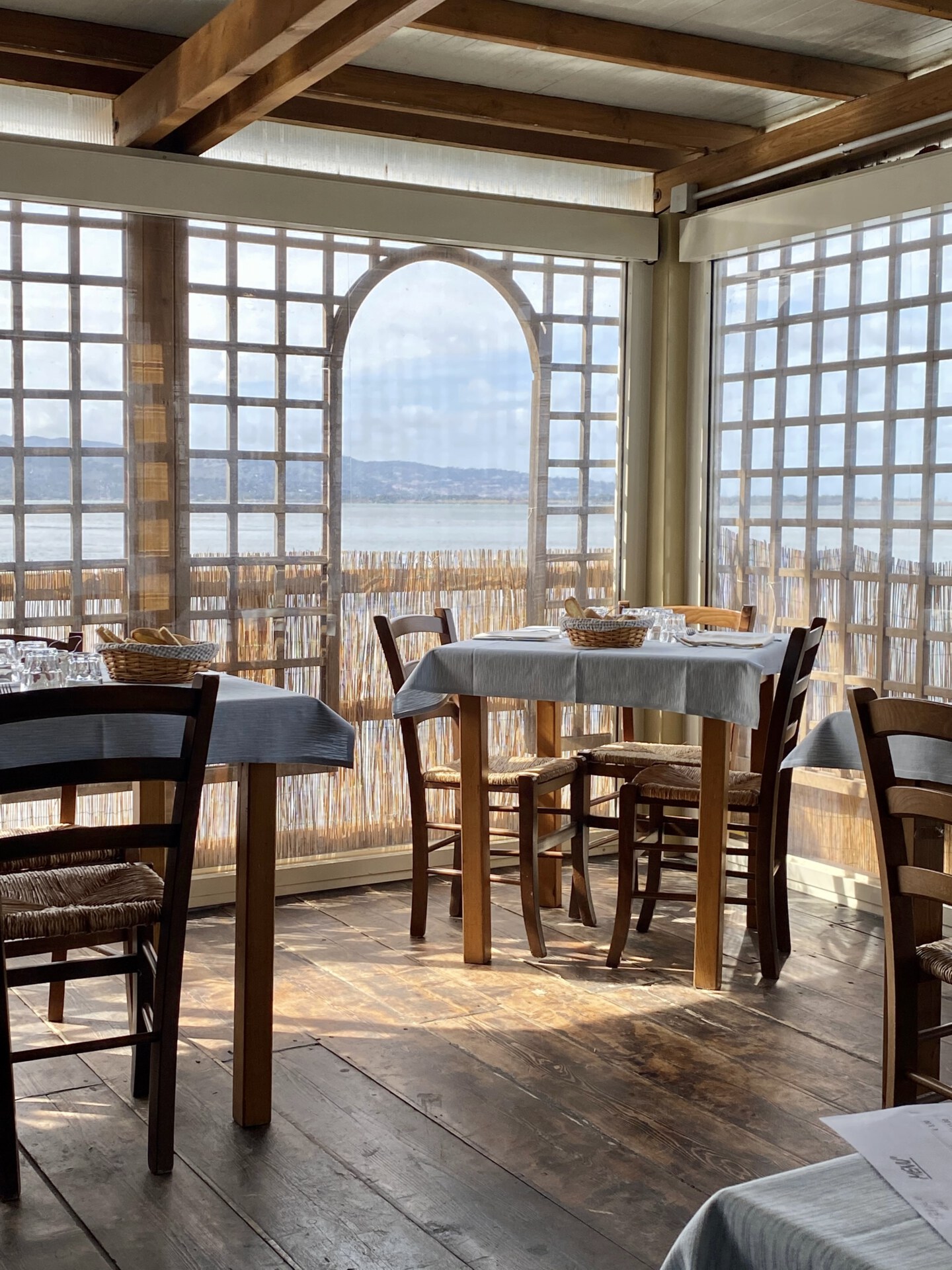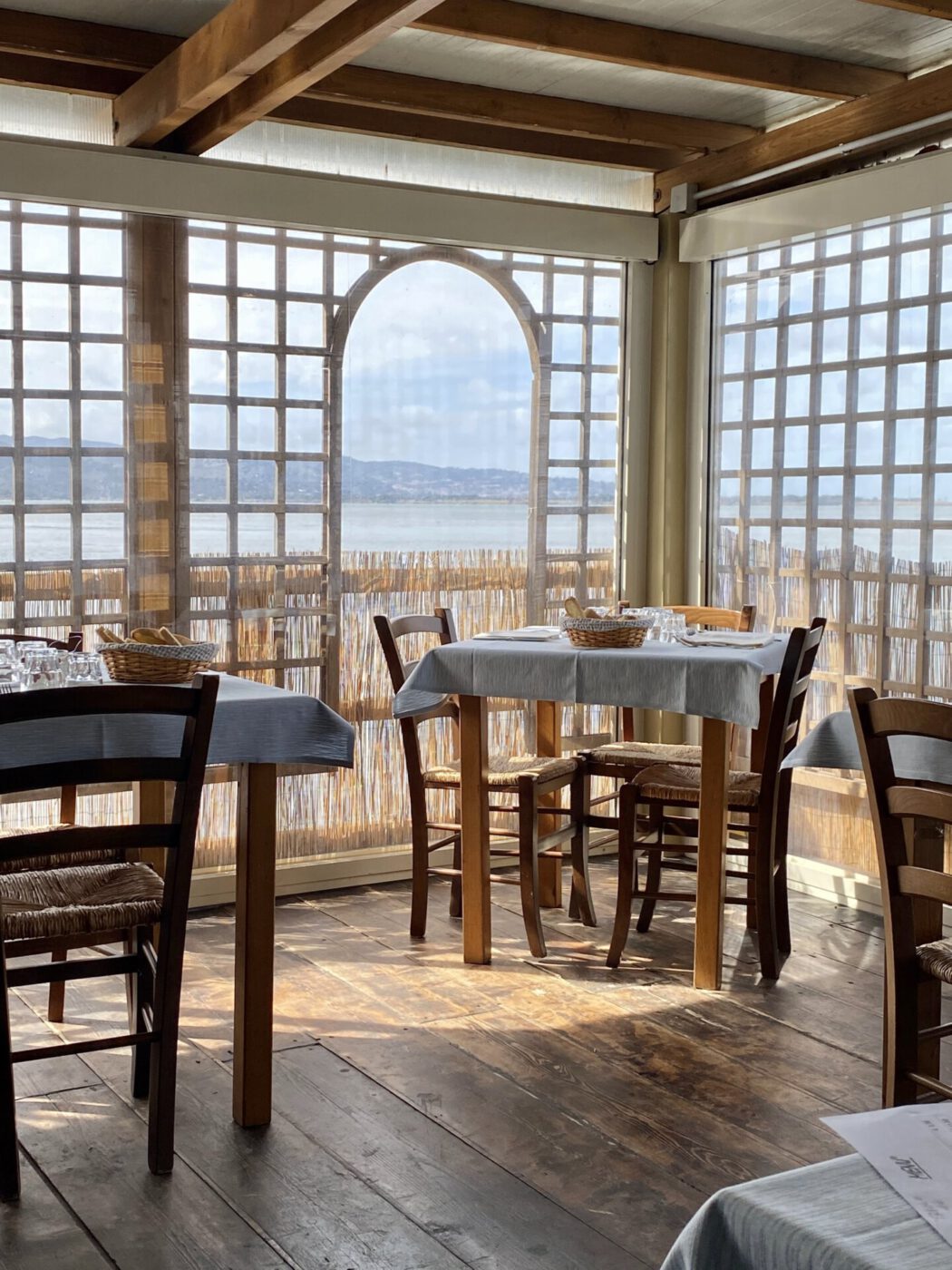For people all over the world—including those who have never traveled to Italy—the mere mention of Tuscany brings to mind images of rolling hills ribboned with cypress tree-lined roads and tables set with thick cuts of bistecca fiorentina and glasses of Chianti wine. Few, however, know about the beautiful landscapes and excellent food of Maremma, the region along the southern border of Tuscany.
Located about halfway between Florence and Rome, Maremma is not far from Italy’s top travel destinations, but it continues to remain off the beaten path as a car is needed to appreciate all that it has to offer. Though it covers around just 5000 km2 of land in Tuscany and Lazio, Maremma is made up of mountains, marshlands, pine forests, sandy beaches and much more. While exploring this wilder part of the Tuscan countryside, you can wake up to the sound of birdsong at sunrise, wind your way through vineyards in the afternoon and watch the sunset over the sea. This natural diversity is reflected in its cuisine, which includes everything from wild boar meat and bottarga to risotto rice and buffalo milk cheese.
Organic Rice Fields and an Agriturismo Immersed in a Forest
Head southwest from the medieval city of Grosseto and you will arrive at Tenuta San Carlo, an agriturismo spanning nearly 500 hectares of land that represents the beauty of Maremma’s varied natural environments and its importance as an agricultural hub in Italy. Ariane Lotti is the fourth generation in her family to run this farm and the third to grow rice here. She transitioned the farm to organic agriculture and specializes in growing two rice varieties: ribe, which is useful for both sweet and savory dishes, and carnaroli, which is ideal for risotto. It’s possible to stay overnight in the agriturismo and wake up within a protected pine forest of the Regional Park of Maremma or to simply stop by for a tour of the fields with Ariane herself and buy a box of rice right where it is grown.
Modern Maremma Cuisine in a Medieval Borgo
From the farm, take a short drive along the coast to reach the medieval town Castiglione della Pescaia, where you can taste Tenuta San Carlo organic carnaroli rice as an appetizer in the form of light-as-air puffed rice chips or in a risotto—often with flavors such as squid ink or saffron with shellfish that are inspired by the restaurant’s proximity to the sea—at Posto Pubblico. While dining under twinkle lights and the night sky on a charming terrace, you will inevitably, wonderfully lose track of time. The surrounding stone walls may make you think you have returned to a long lost era, but the contemporary menu will bring you back to the present. Posto Pubblico is owned by a pair of brothers, Alessio and Giulio Cech, who serve classic Italian dishes featuring local ingredients with a modern sensibility. The menu demonstrates their diverse set of interests and skills, including superb sourdough bread made with organic heirloom wheat grown at Tenuta San Carlo, ravioli maremmani (a local ricotta and spinach pasta) and pesce crudo (local raw fish).
A Classic Maremma Menu and an Unforgettable View
For a more traditional take on Maremma cuisine, drive inland and up into the mountains to Il Tufo Allegro in picturesque Pitigliano. The restaurant is cozily carved into the rocks that are its namesake (tufo, or tuff in English, is a type of rock made of volcanic ash) and the reason many people visit the town. On your way, wander along the walls for a panoramic view of Maremma and stroll through the stony streets for a sense of its history, which dates back to the Etruscan era. Pitigliano is also known as Little Jerusalum for the Jewish community that has called this place home for many years and has shaped its culinary traditions, such as the sfratti, a kind of honey and nut-filled pastry, also found on the Il Tufo Allegro menu. Order these for dessert after savory regional specialties like peposo (red wine and black pepper beef stew) and pici (a thick spaghetti-like pasta).
Another fantastic option for a local, simple, rustic meal is Ristorante Fontanile dei Caprai, in Marsiliana.
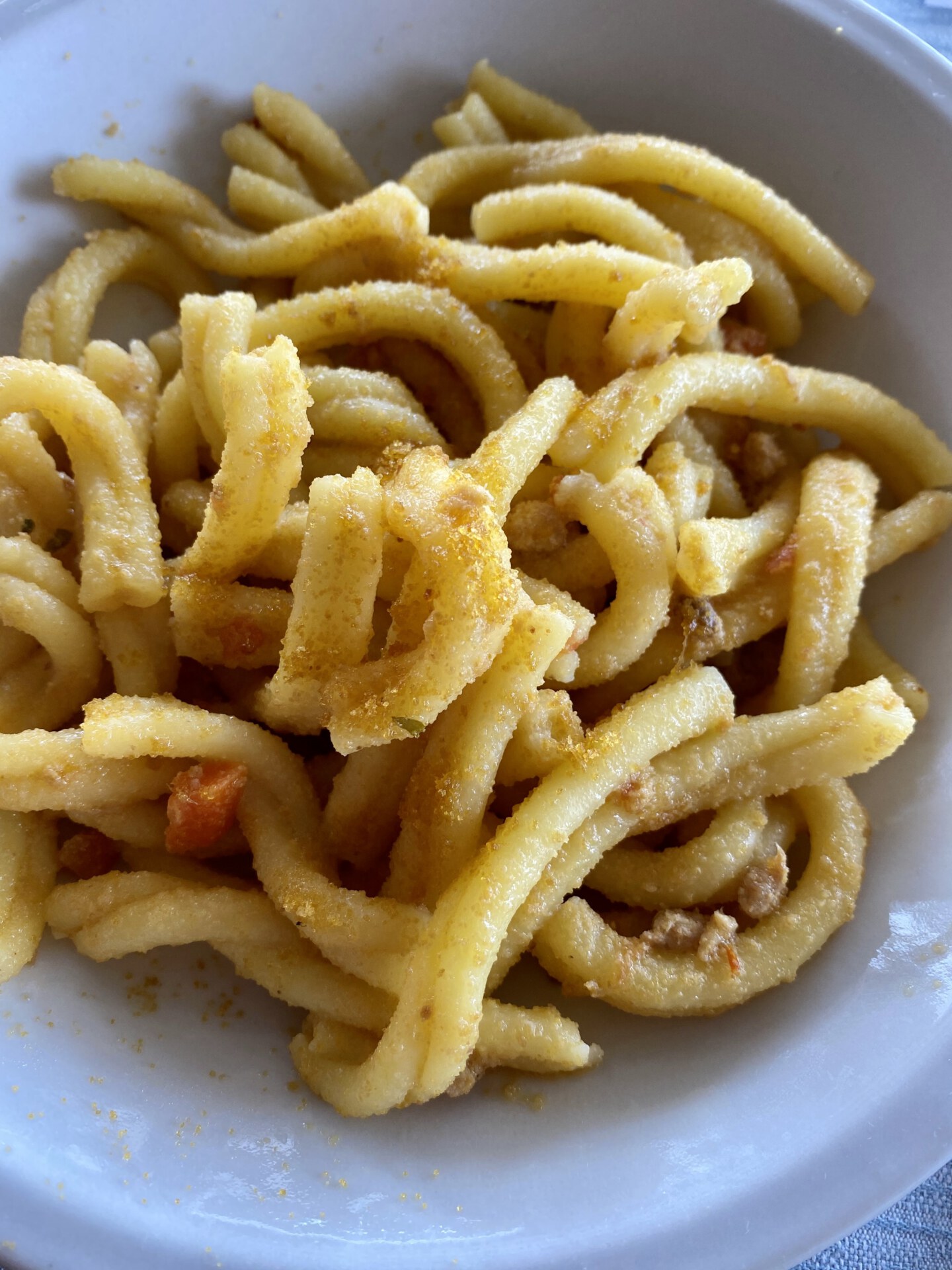
Buffalo Milk Cheeses in the Land of the Butteri
Maremma was known in the past as the Wild West of Italy because of the cowboys (butteri in Italian) who herded the enormous, grayish-white Maremmana cattle that have come to be symbolic of the region. These cows thrive in the Maremma wilderness, using their long horns to push aside the branches of low trees and shrubs while grazing, and were once useful as work animals, but now are raised for meat. It is possible to find Maremmana cattle on a few farms today, including Tenuta San Carlo, which is just down the road from Caseificio Inno al Sole–home to a herd of another animal not typically associated with Tuscany: water buffalo. Stop by Caseificio Inno al Sole for a tasting of their exceptional dairy products, including mozzarella, ricotta and burrata, as well as their buffalo milk cappuccino, which is as rich and creamy as their cheeses. You can also join a farm tour to see the buffaloes grazing just around the corner from the shop.
A Taste of Maremma Terroir in Natural Wines
Tuscany is a well-known region of wine production in Italy, but relatively few people are familiar with the vast variety of grapes grown here besides sangiovese. Ampeleia, a winery in Roccatederighi, produces several different red wines, as well as white wines and rosé, all according to biodynamic farming practices that work in harmony with the land and emphasize the one-of-a-kind characteristics of this particular part of Maremma. Wherever you are, the creative, colorful labels wrapped around Ampeleia’s bottles make the drinking experience delightful even before the wine has been poured, but if you have a chance, it is well worth a visit to see the vineyards and taste the wine where it is made. If you’re looking to take home a Tuscan red, try their signature Ampeleia wine, made with 100% Cabernet Franc.
Fresh Fish Served by the Sea
A trip through Maremma would not be complete without partaking in the seafood caught along its coast. There is no better place to do so than seated at a table overlooking the sea in Orbetello at I Pescatori. When dining at this restaurant, rest assured that your fish has been freshly and sustainably caught nearby by one of the fishermen of the local fishing cooperative, Cooperativa La Peschereccia, which was founded in 1943. Be sure to try the bottarga (salted fish eggs), a specialty of the area, which is deliciously grated over pasta.
Don’t miss L’Oste Dispensa, a contemporary osteria right on the giannella beach that sources all of their seafood locally. Or, right on Porto Ercole’s charming port, head to Hostaria Alicina for a leisurely seafood dinner, with a relaxed, nautical feel and views of fishing boats drifting in. Ask for a table on the platform over the water and order the crudi, followed by spaghetti aglio, olio, peperoncino e moscardini. For those who love wilderness and isolation—with a great meal, of course—opt for La Vela on the island of Giannutri. Must-order dishes include tagliolini with bottarga, pistachio, and lemon zest, as well as the alici fritte. Book ahead, and don’t forget to buy tickets in advance for access to the island at the bar in the piazza.
Where to Stay
Aside from some of the places listed above, here are four more luxurious and relaxing places to stay to help you discover the tranquility of Maremma. Villa Talamo in Grosseto is the embodiment of dolce far niente, with its pastel ochre villa surrounded by lush Mediterranean and exotic gardens, overlooking the Tyrrhenian Sea. This peaceful oasis, whether you’re staying in one of its 10 unique rooms or renting the entire villa, offers a timeless escape, a dreamy wedding location, and the perfect blend of nature and culture. In the tiny hamlet of Pereta (Grosseto), the charming residence Locanda Sposesa is a relaxed stay, hosted in Johnny and Elizabeth’s welcoming, brightly colored, and British-inspired home. You can book the entire house for a family celebration or opt for traditional B&B with breakfast served in their charming kitchen or eccentric garden dining room.
La Roqqa, a new 55-room luxury boutique hotel, overlooks the scenic Porto Ercole. Its owners are dedicated to revitalizing the area by investing in old properties and establishing Porto Ercole as a top destination for conscious travel, with La Roqqa leading their projects. Central to the hotel’s vision is a commitment to the local community, predominantly hiring local staff and sourcing nearly all supplies from nearby providers. La Pescaia Resort is a beautifully restored nineteenth-century Villa-Farm with a rich history and surrounded by olive trees, pristine forests, and hidden paths for nature enthusiasts. Managed by two passionate sisters, the estate offers an intimate experience with 14 rooms, a stunning pool, and a “home” restaurant featuring local cuisine with organic ingredients, providing a sophisticated, historical escape.


